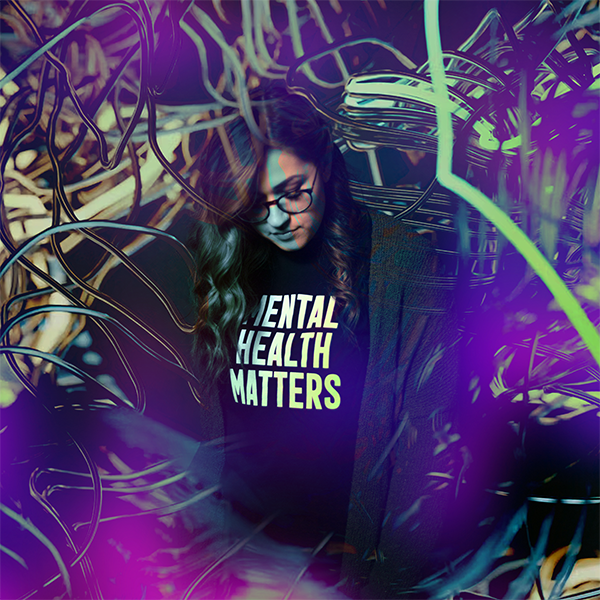A Necessary Read: Jemar Tisby and The Color of Compromise
“If the white man has inflicted the wound of racism upon black men, the cost has been that he would receive the mirror image of that wound into himself. As the master, or as a member of the dominant race, he has felt little compulsion to acknowledge or speak of it; the more painful it has grown the more deeply he has hidden it within himself. But the wound is there, and is a profound disorder, as great a damage in his mind as it is in his society.” —Wendell Berry, The Hidden Wound
Several years ago, I’d taken a group of young adults from our church to Ghana for our annual tradition of The Summer Mission Trip(TM). Our Ghanaian pastor host took us to see Elmina Castle. Elmina was built by the Portuguese in 1482 and soon became a hub for the Atlantic slave trade. It felt like our tour guide missed no opportunity to slip in subtle digs in against Christians. Such as, here’s the dungeon where people were held before being packed on ships to the Caribbean. And, right above us is a chapel where the Europeans had weekly church services. To me, the evil in that space was palpable.
All the emotions and details of that moment came flooding back to me when I read The Color of Compromise: The Truth About the American Church’s Complicity in Racism by Jemar Tisby. Tisby’s book is a history book. But it’s a history I didn’t learn about in my public school, or in my Christian college. I didn’t hear anything about it in church, though I’ve spent nearly all my 40 years in church. I didn’t hear about it in seminary, either. It’s a story about how American religion and racism have existed side by side—too often, holding one another’s hands—much like the dungeon and the chapel I saw at Elmina.
In The Color of Compromise, Tisby walks through the seemingly always intertwining stories of racism and religion in the United States. He starts with the colonial era and covers major events such as the American Revolution, slavery and the Civil War, Reconstruction and Jim Crow, and the Civil Rights movement all the way through to the more recent events surrounding Black Lives Matter.
Tisby writes, “Historically speaking, when faced with the choice between racism and equality, the American church has tended to practice a complicit Christianity rather than a courageous Christianity.” He weaves a piercing narrative of American religious history, and four particular topics stood out to me.
Historically speaking, when faced with the choice between racism and equality, the American church has tended to practice a complicit Christianity rather than a courageous Christianity. Share on XThe Origins of Historically Black Denominations
Tisby writes, “There would be no black church without racism in the white church.” He tells the story of Richard Allen and Absalom Jones, who became lay preachers in the Methodist Episcopal Church. Though Allen was a regular preacher at St. George’s, an interracial church in Philadelphia, he found it an increasing inhospitable environment for himself and others who were not white. On a Sunday in 1792, Allen and Jones were escorted out of the church for praying in seats reserved for white congregants.
Two years later, Allen started Bethel African Church with his own money on his own land, and in 1816 he helped found the African Methodist Episcopal denomination, becoming its first bishop.
Housing and White Flight
Tisby echoes themes from Mark Mulder’s church ethnography Shades of White Flight as well as Michael Emerson’s and Christian Smith’s landmark book Divided by Faith. Evangelicalism in the United States, with its emphasis on personal piety, lacks a vocabulary for structural and institutional sins, such as racism.
Evangelicalism in the United States, with its emphasis on personal piety, lacks a vocabulary for structural and institutional sins, such as racism. Share on XReal estate practices in the first half of the twentieth century such as red-lining and blockbusting created the segregated neighborhoods we see today. White churches played into this separation. Referencing Mulder’s narrative about seven Christian Reformed congregations abandoning the Englewood and Roseland neighborhoods of Chicago, Tisby writes, “Certain evangelical theological positions may have made it easier to leave demographically transitioning neighborhoods rather than adapting to a new environment.”
Private Schools
One aspect that especially jumped out to me was the history of Christian private schools and the force of racism related to them. Tisby highlights how the origins of the Religious Right are found not in abortion, school prayer, or the Equal Rights Amendment, but rather in President Jimmy Carter’s threat to deny tax-exempt status to Christian schools on the basis of so-called de facto segregation.
In 1969 when the federal government began enforcing desegregation, one county in Mississippi saw white attendance in the public school drop from 771 to twenty-eight to zero over the course of two years. Three black families sued, provoking a court ruling that any organization that discriminated by race could not be designated a “charitable” institution. This ruling was upheld by the Supreme Court case Green v. Connally in 1971.
Black Lives Matter
It’s against this backdrop of Christian complicity in our nation’s racial issues that Tisby recounts the most recent events related to Christian responses to the Black Lives Matter movement. He discusses the backlash against hip hop artist Lecrae, pastor Thabiti Anyabwile, and the Urbana Student Missions Conference for their roles bringing attention to the movement, and he continues with the overwhelming support of evangelicals for Donald Trump in the 2016 election.
He closes the chapter by stating:
“Christian complicity with racism in the twenty-first century looks different than complicity with racism in the past…It looks like Christians telling black people and their allies that their attempts to bring up racial concerns are ‘divisive.’ It looks like conversations on race that focus on individual relationships and are unwilling to discuss systemic solutions.”
Why This is Important
I live in a neighborhood adjacent to the historic Greenwood in Tulsa, OK. One hundred years ago, Greenwood was one of the most affluent black communities in the country, so much so that it garnered the nickname “Black Wall Street.” During the night of May 31 to June 1, 1921, the white community burned it to the ground. Thirty-five city blocks were destroyed and thousands displaced. Approximately 300 people were killed, all in a single night. And then the incident wasn’t spoken of openly in the community for seventy-five years.
According to one local white preacher at the time, what is now called the Tulsa Race Massacre “was the best thing to ever happen to Tulsa and that judging from the way strange Negroes were coming to Tulsa we might have to do it all over again.”[1] He was not the only clergyman expressing such opinions from the pulpit.
The Color of Comprise is important reading. We need this book right now. My community needs this book right now. We need to tell the truth, the whole truth about our communities and neighborhoods, our churches, and our country. Racism isn’t something outside of ourselves that we can point to and say, “Look at that evil thing over there.” As Tisby writes, it’s inside us. It’s deeply imbedded in our American religious story. It’s our story.
Racism isn't something outside us we can point to and say, 'Look at that evil thing over there.' It's inside us. It's deeply imbedded in our American religious story. It's our story. Share on XMartin Luther King, Jr. famously called the Sunday morning 11 o’clock hour the most segregated hour in America. Before we can begin making progress with the racial messes before us, we need to begin by asking how our nation became this way in the first place. We need to pay attention to voices like Tisby’s.
As he writes in the introduction,
“Reading The Color of Compromise is like having a sobering conversation with your doctor and hearing that the only way to cure a dangerous disease is by undergoing an uncomfortable surgery and ongoing rehabilitation. Although the truth cuts like a scalpel and may leave a scar, it offers healing and health. The pain is worth the progress.”
We won’t find healing from the wound that Wendell Berry talked about almost fifty years ago until we can name it and talk about it openly today.
Every night I pray over my kids that the Holy Spirit would make them bold and brave and courageous. And now I pray that the same would be true of myself—that my Christian faith would be bold and brave and courageous in the face of the sin that is racism and white supremacy.
[1] “Beno Hall: Tulsa’s Den of Terror” by Steve Gerkin, This Land Press. http://thislandpress.com/2011/09/03/beno-hall-tulsas-den-of-terror/



